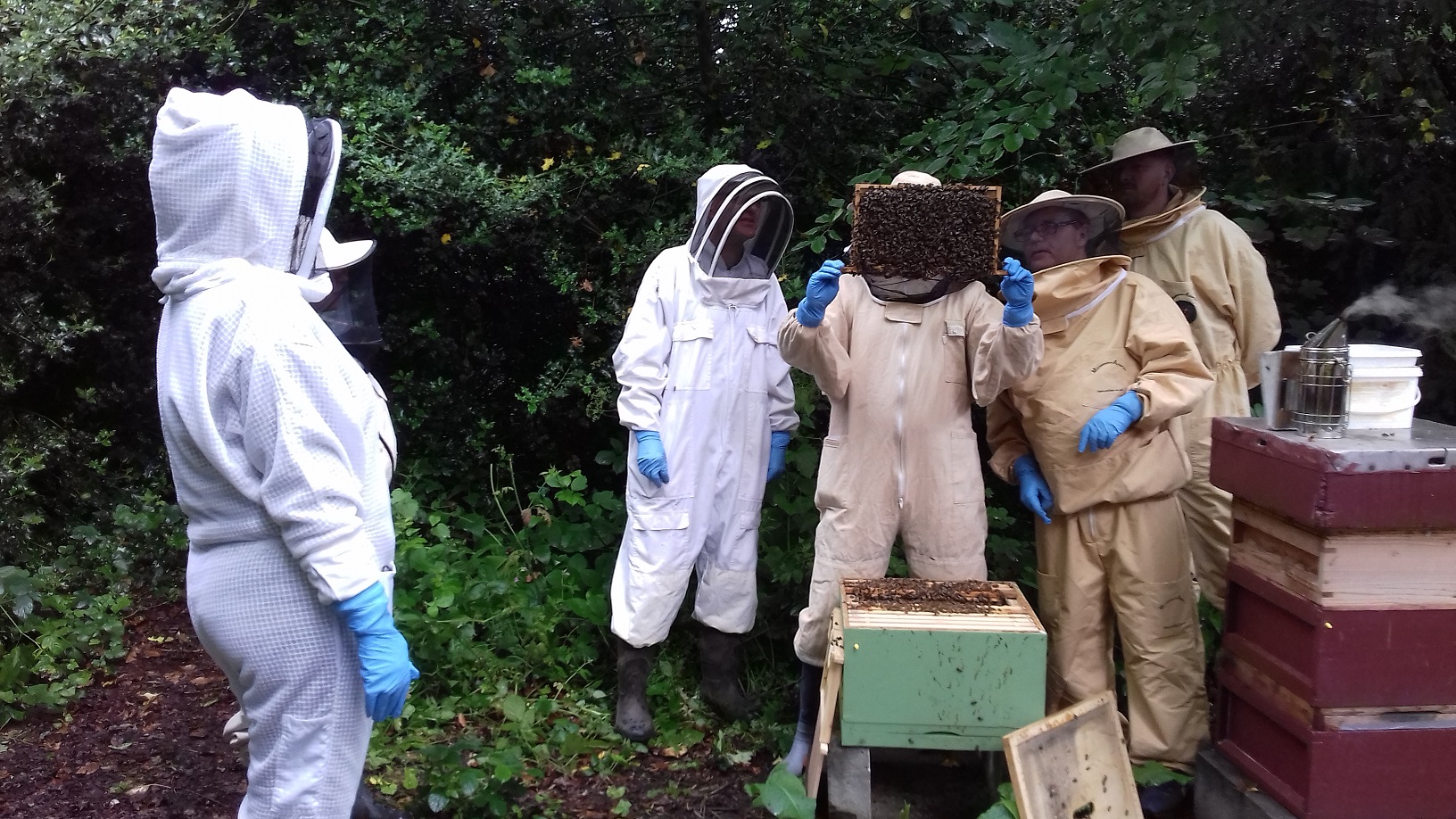
Beekeeper Sam beside ivy 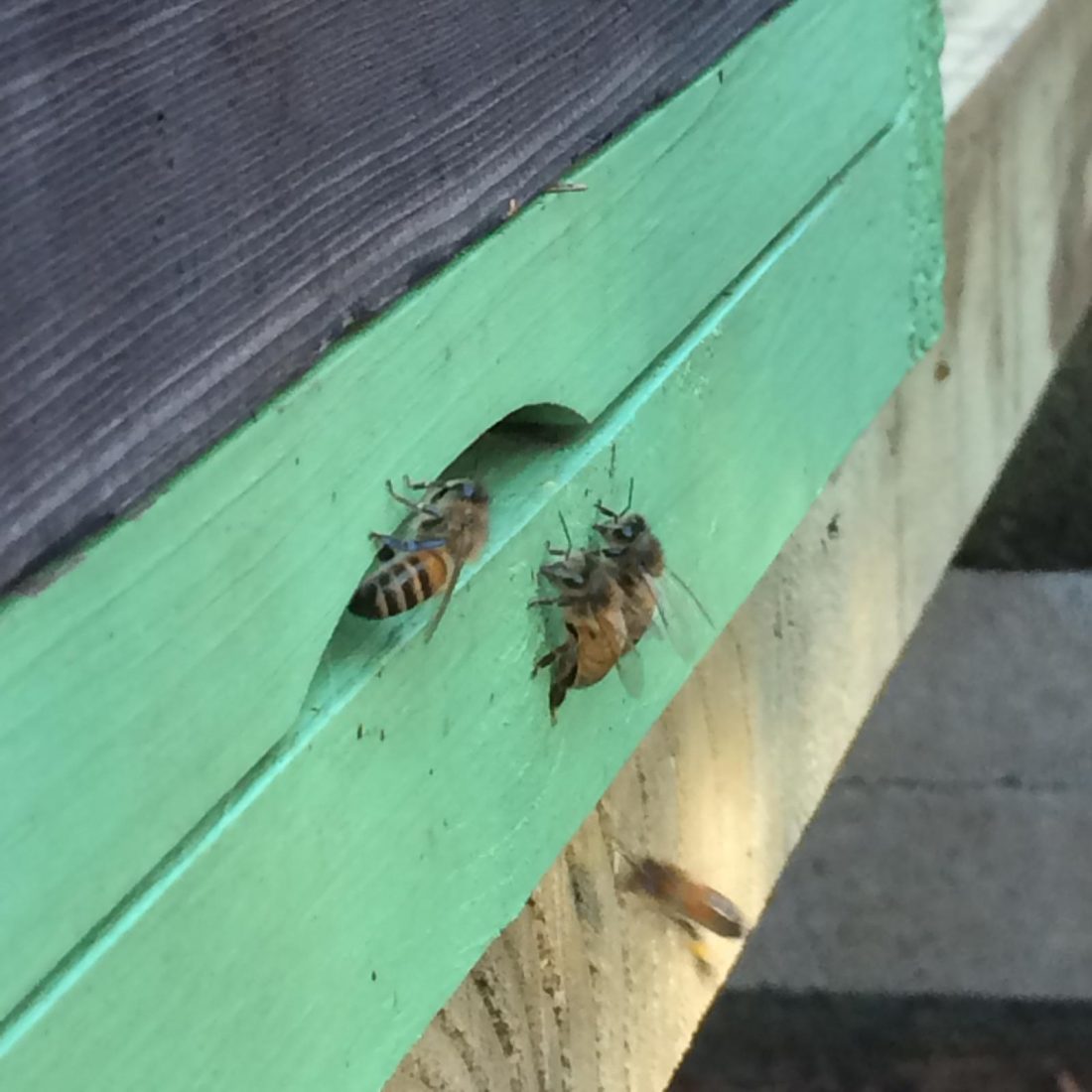
Honey bees at Martineau Gardens entering the hive
Though winter is a time when much wildlife is hibernating or lying low, emerging for food then darting back to the safety of their abode, on a sunny day, you might notice a honeybee foraging for food. That got us thinking, what do beekeepers do over winter? We asked our volunteer beekeeper, Sam Walker, what are the main challanges are over the winter months.
What do beekeepers do over winter?
Sam explains: “Winter is less busy time, but it’s still an important time for beekeepers. Throughout the winter months, the hives must still be monitored but less invasively and less frequently, so as not to disturb the winter cluster. I’ve been visiting the hives at Martineau Gardens regularly over winter. I’m checking that the bees’ food stores are still accessible and topping them up, if needed. Honeybees prefer the the nest at a constant temperature, they achieve this by clustering together, just like King penguins huddling to keep warm!.”
Do bee’s hibernate?
A honeybee colony will hibernate but may fly if the weather is warm enough and there is food. By contrast with bumble bees and wasps, only the queen will hibernate – the workers (female) and drones (male) die out before the winter.
Is honey being produced over winter?
A honeybee colony may contain approximately 50,000 to 60,000 bees during the summer, but far fewer are needed over winter, this maybe reduced to around 10,000 bees over winter. This is the reason why honeybees store extra food. They need the extra stores to get them through the winter, so it’s important for beekeepers to ensure they have enough food. They don’t tend to make honey over winter in the UK as there isn’t the volume of plants they need to forage from to make honey.
Do honeybees forage over winter?
During mild winters the honeybees will actually use more food stores that they would in a very cold winter. If it is a mild day during the winter honeybees may be seen flying in the apiary for toilet breaks or to forage for nectar and pollen from the few winter flowering sources of food, such as ivy, gorse, hellebores, winter honeysuckle, winter heliotrope and winter jasmine and snowdrops. This website is a great and informative source of which wildflowers to expect each month. http://www.seasonalwildflowers.com
Why have you been moving slabs around in the aviary?
So along with checking food stores it’s good idea to check that hives have not fallen over in bad weather. And that no unwanted visitors have been visiting such as mice and woodpeckers. As food becomes more scarce for these animals they look for any opportunities!
Winter is also an excellent time to do any work in the apiary as there are less bees flying! I have been making a few improvements. I have lifted the hives a little more and on to longer hive stands to give me more room to work, placing slabs on the ground below the hives to try to reduce the moisture within the hives, and save my back a little. Sometimes swarms land under the hives and this will make it a lot easier to retrieve them.
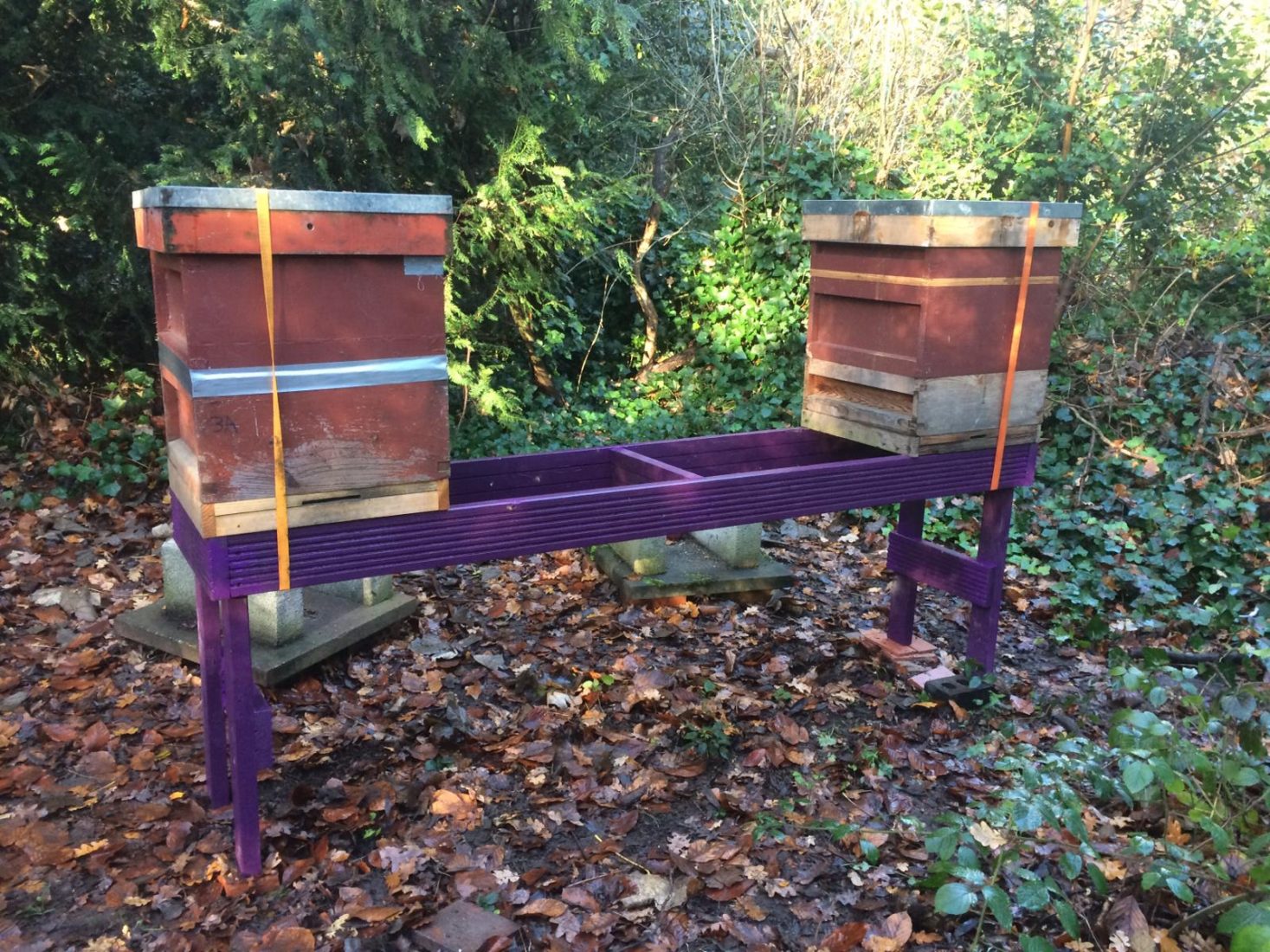
Raising the hives in late autumn 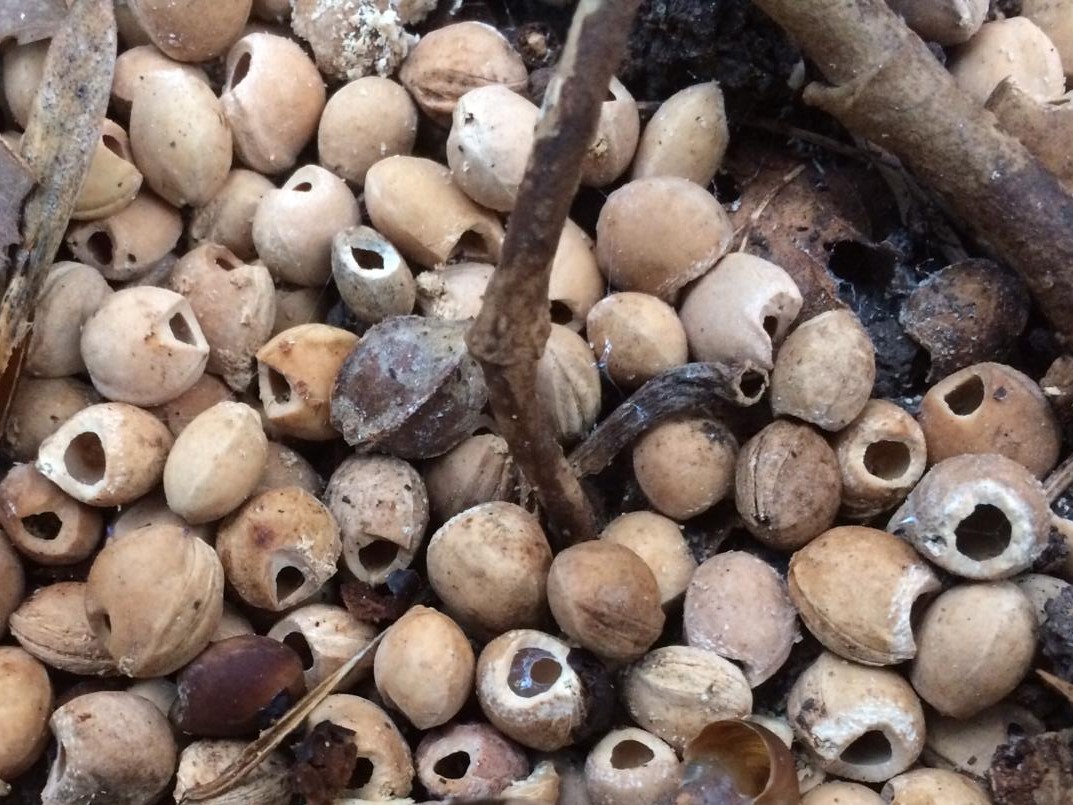
A surprising disovery
In January, when Sam was re-organising the area, she moved a slab and found a neatly gathered store of cherry stones – all nibbled with a small hole – the store cupboard of a woodmouse.
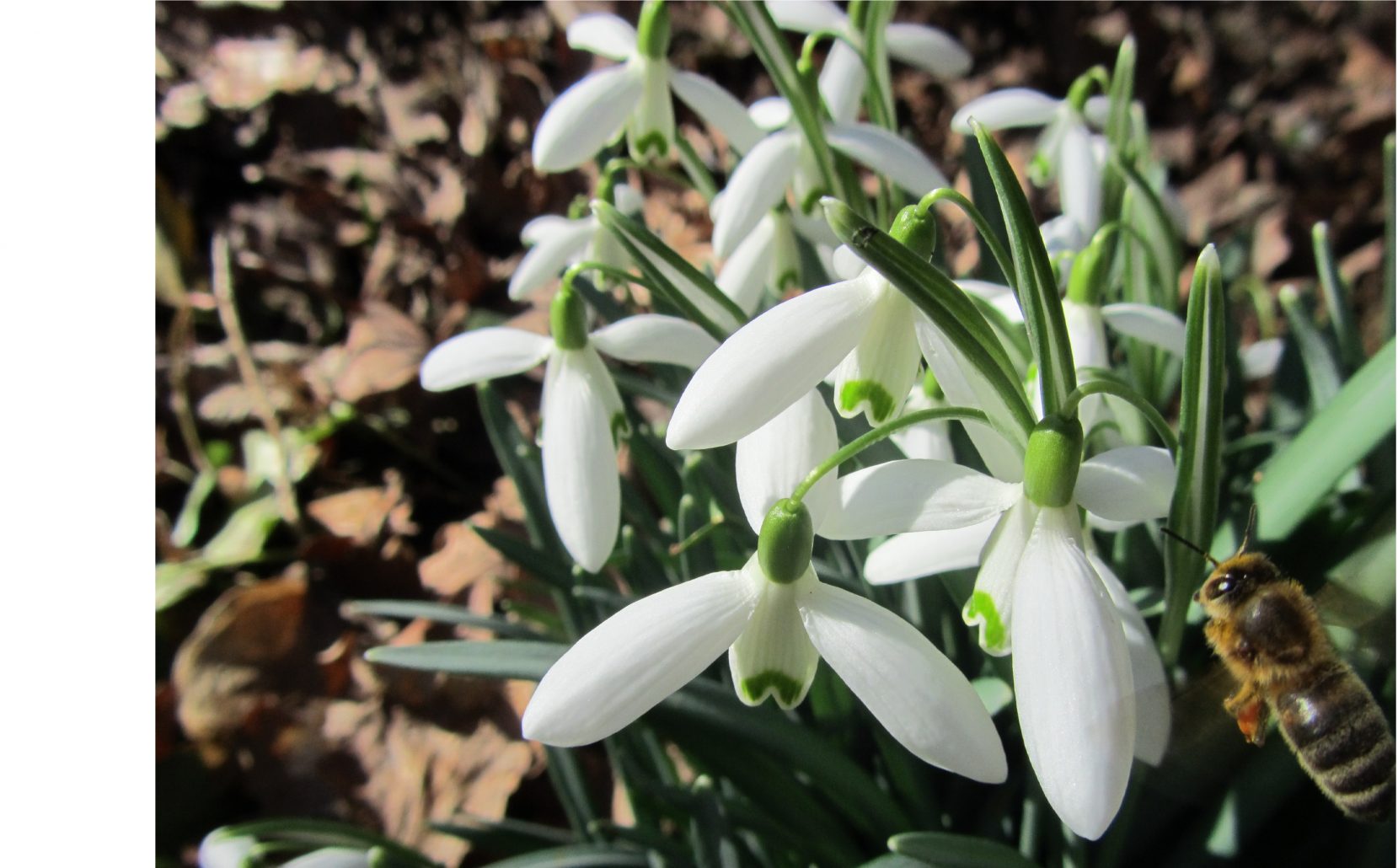
What are your plans for 2021 at Martineau Gardens?
The start of the year I’m checking and cleaning equipment, making repairs, and planning the coming beekeeping season based on records made from previous years. Making sure I have enough equipment and reading up on bees, there is an amazing amount of information. This winter I have been studying honeybee pests, diseases and poisonings, forming a zoom study group with other beekeepers from Birmingham Beekeepers Association. We have also started to look into honeybee Management and Behaviour which are all modules run by the British Beekeepers Association to improve the beekeepers skillset. I have also had a little go at making mead too! (A traditional alcoholic drink made by fermenting honey.)
The beekeeping season generally starts in April time but is temperature and frost dependent. Full inspections of the honeybee colonies will not take place until there has been no frosts and the daytime temperatures have reached 16ºc. There is a short period before the honeybees start to expand their nest in which you can prepare for the swarming season, and start to look for cues that the colony is about to swarm which is the natural way in which honeybees multiply to make new colonies.
Beekeeping classes
We’ve run beekeeping classes at Martineau Gardens for a number of years, sadly we had to cancel our classes planned for 2020, due to the pandemic, but we’re looking at how we can deliver these safely this year, and will be letting people know what’s possible. An area of beekeeping that is growing in interest is ‘Natural Beekeeping’ – looking after the interests of the bee population, not just keeping bees for honey. I’m attempting to combine some of these practices into my beekeeping husbandry techniques to try to have more of a Natural Beekeeping focus.
